There’s something magical about bringing nature into my home, letting the peaceful green leaves lift my mood and brighten up any room. Over time, I’ve found that having indoor plants isn’t just about decorating the space—it has the power to completely change how I feel in my own home. They help me breathe easier, feel less stressed, and even make me more focused and creative just by being there.
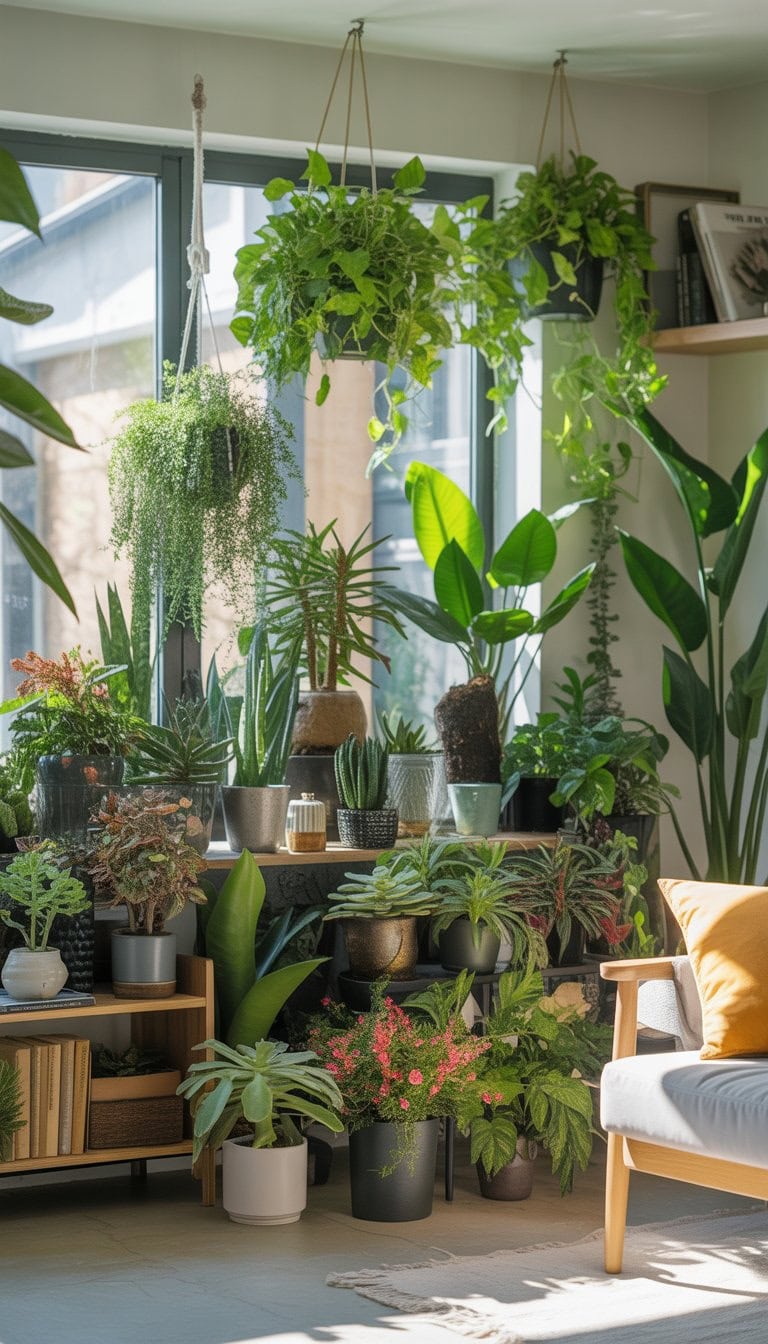
I want to share how simple changes, like adding a few houseplants, have helped me transform both my rooms and my everyday life. Whether I’m looking for a fresh vibe, better air, or just a little more happiness, these plants never fail to inspire me. If you’ve dreamed of turning your space into a calm retreat, you’ll love discovering these uplifting green companions.
English Ivy for air purification and toxin removal
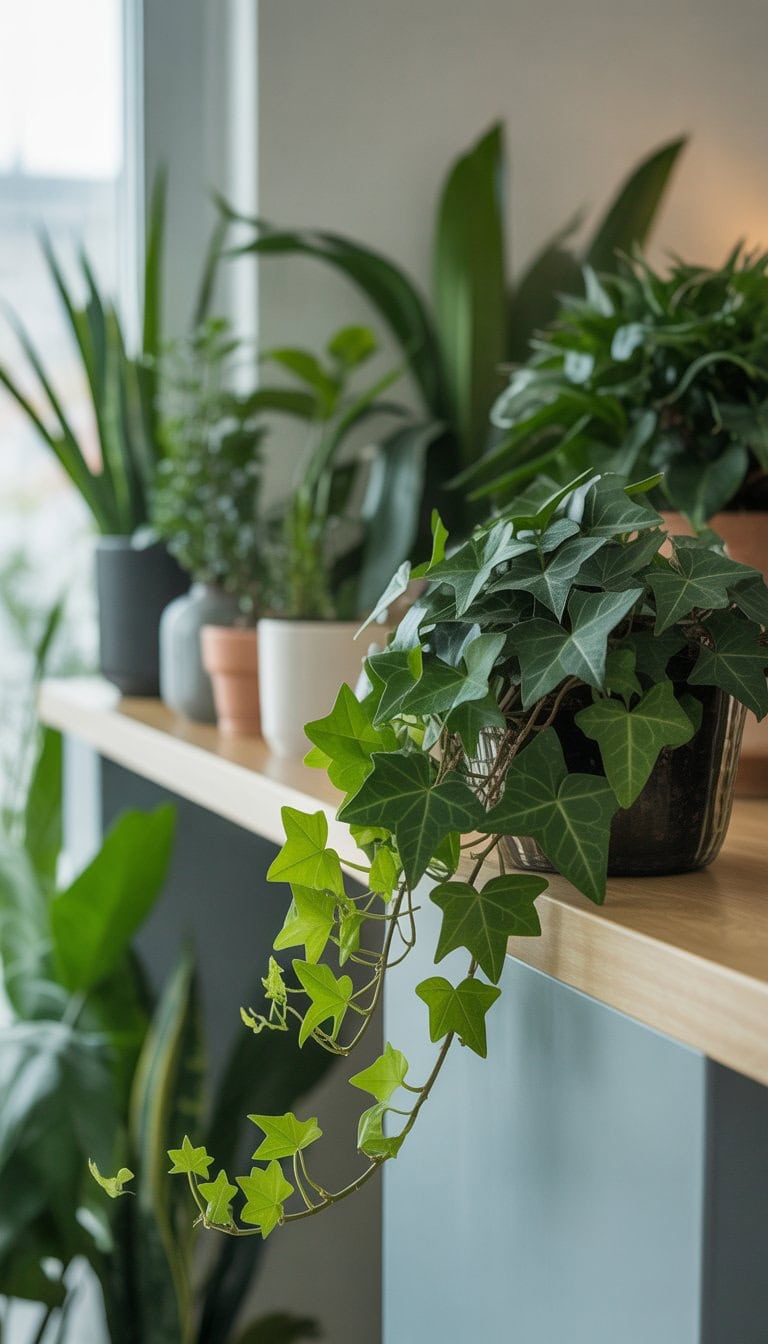
I love having English Ivy in my home. Its trailing vines look great in hanging baskets or on a shelf. It’s easy to grow, which makes it ideal if you’re just getting started with plants.
One reason I picked English Ivy is because it helps clean the air. Research shows it removes toxins like formaldehyde and benzene. It can also reduce mold and particles in the air, which is a huge plus for my allergies.
Keeping English Ivy around gives me peace of mind. I know it’s doing a little work behind the scenes to help my space feel fresher. If you’d like to learn more, some studies found that English Ivy is one of the best air-purifying plants you can grow indoors.
Aloe Vera to soothe skin and improve air quality
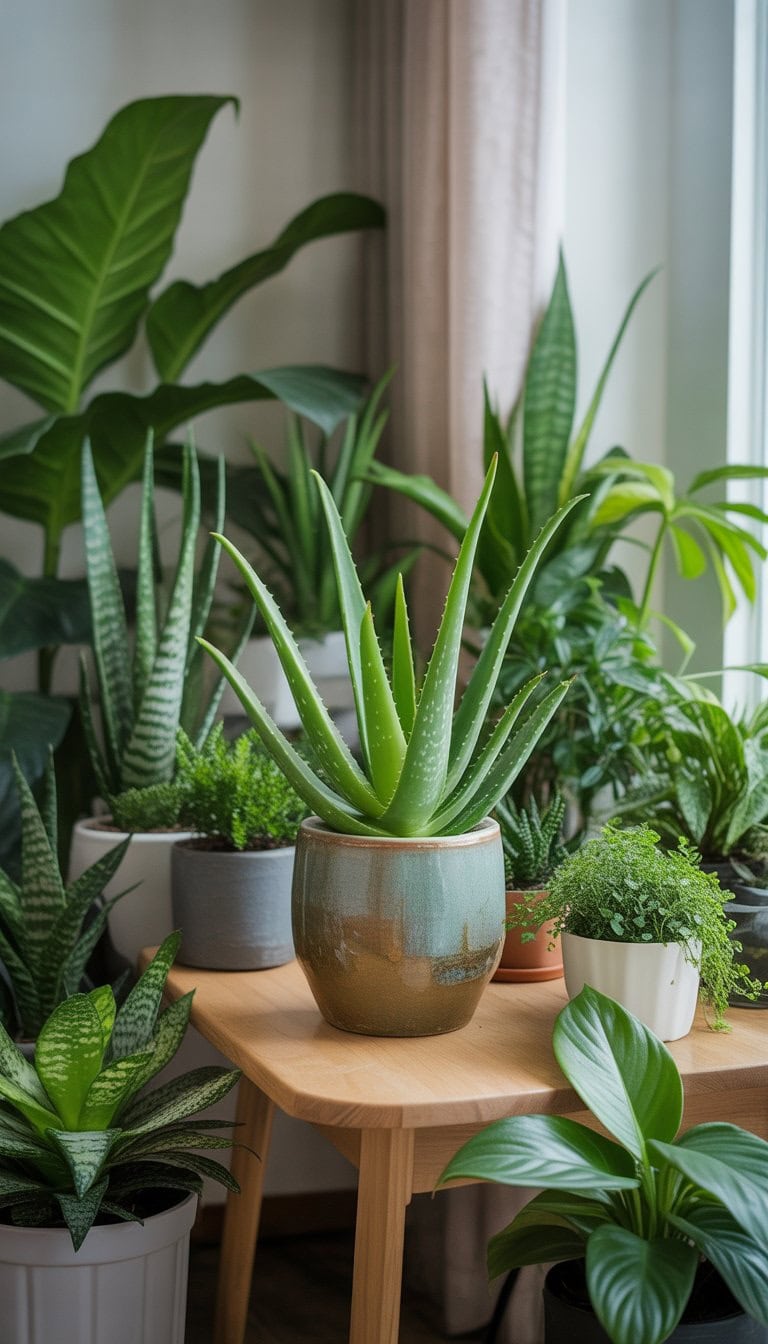
I keep an Aloe Vera plant on my windowsill because it’s so easy to care for. The thick, green leaves look good in any room.
Whenever I have a small burn or cut, I use the gel inside Aloe Vera leaves to help soothe my skin. It feels cool and gentle, like a natural remedy that’s always within reach.
I also like knowing that Aloe Vera can help filter some common indoor toxins. I’ve read that this plant is often chosen for its air-purifying abilities, even if the effect is small.
Caring for Aloe Vera only takes a bit of sunlight and a little water. For busy days, it’s one less thing to worry about. When I see my Aloe Vera thriving, it gives my space a fresh and calm vibe.
Peace Lily to reduce stress and boost mood
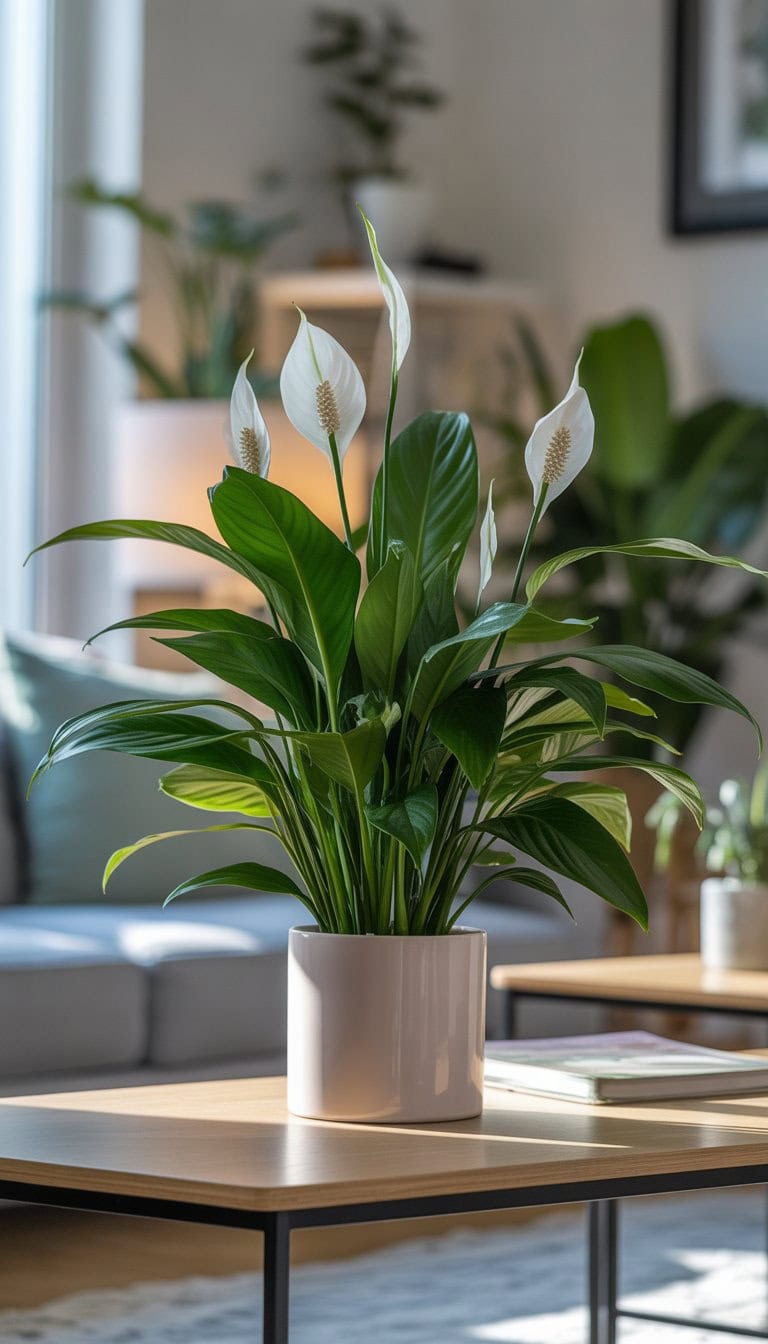
I love having a Peace Lily in my home because it instantly makes any room feel calmer. The deep green leaves and white flowers have a gentle, peaceful look. Whenever I walk by, I always feel a little lighter.
Peace Lilies have been linked with reducing stress and improving mood. I notice I breathe easier and relax more when I see mine every day. The idea that this beautiful plant helps lower tension is supported by experts who say its flowers have natural calming effects.
On top of that, it’s easy to care for. I just keep mine out of direct sunlight and water it when the soil feels dry. The Peace Lily stands out as a plant that doesn’t just look good, but can also help reduce stress and bring a sense of peace to my space.
Spider Plant for enhanced indoor air quality
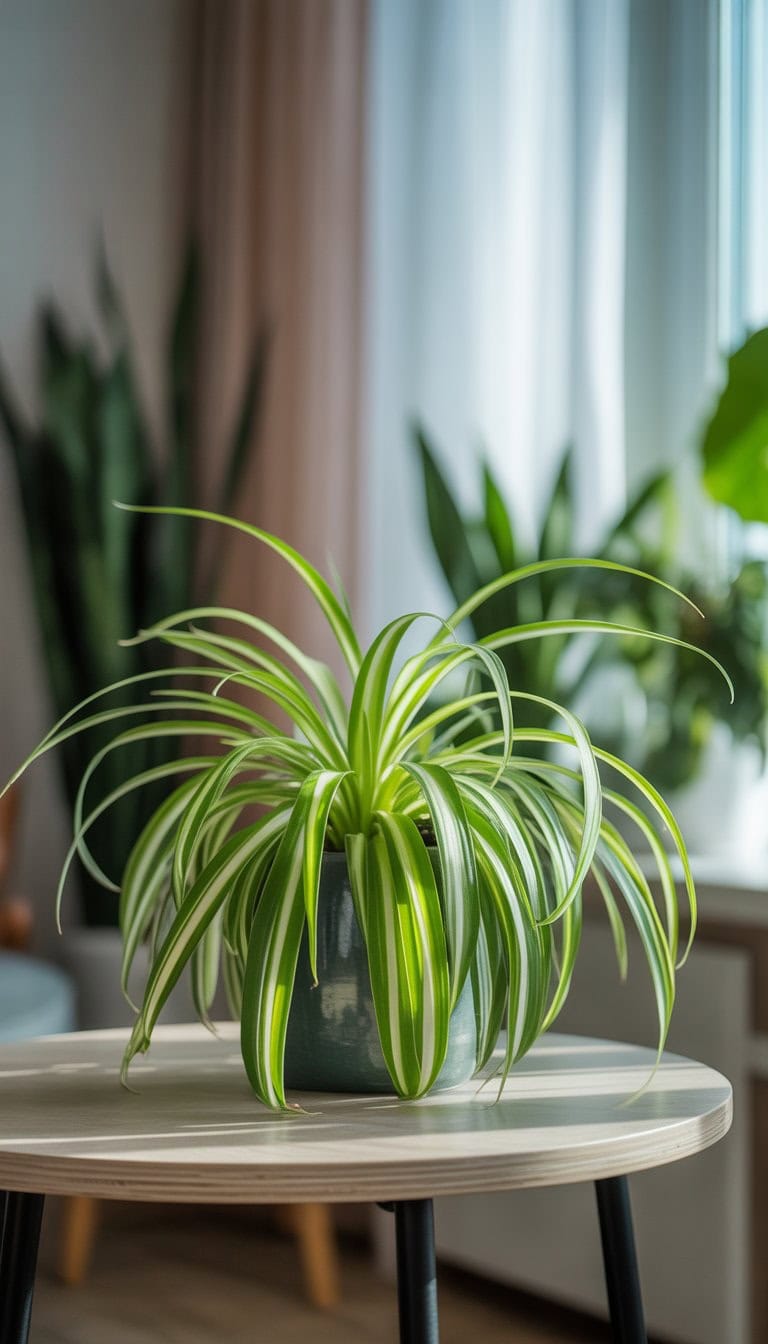
I’ve always found that adding a spider plant to any room makes it feel fresher and more inviting. The arching green-and-white leaves brighten up my desk or windowsill with almost no effort. I appreciate how simple these plants are to care for, even if you’re new to houseplants.
What really draws me to the spider plant is its reputation for helping clean the air. Studies show these plants can remove certain indoor toxins like formaldehyde and xylene. I like knowing my spider plant is quietly working to support a healthier home environment.
Because spider plants don’t need much light and can adapt to different spaces, I can put them almost anywhere. They’re a great choice if you want to try an air-purifying houseplant without a lot of maintenance.
Snake Plant to cleanse the air and release oxygen at night
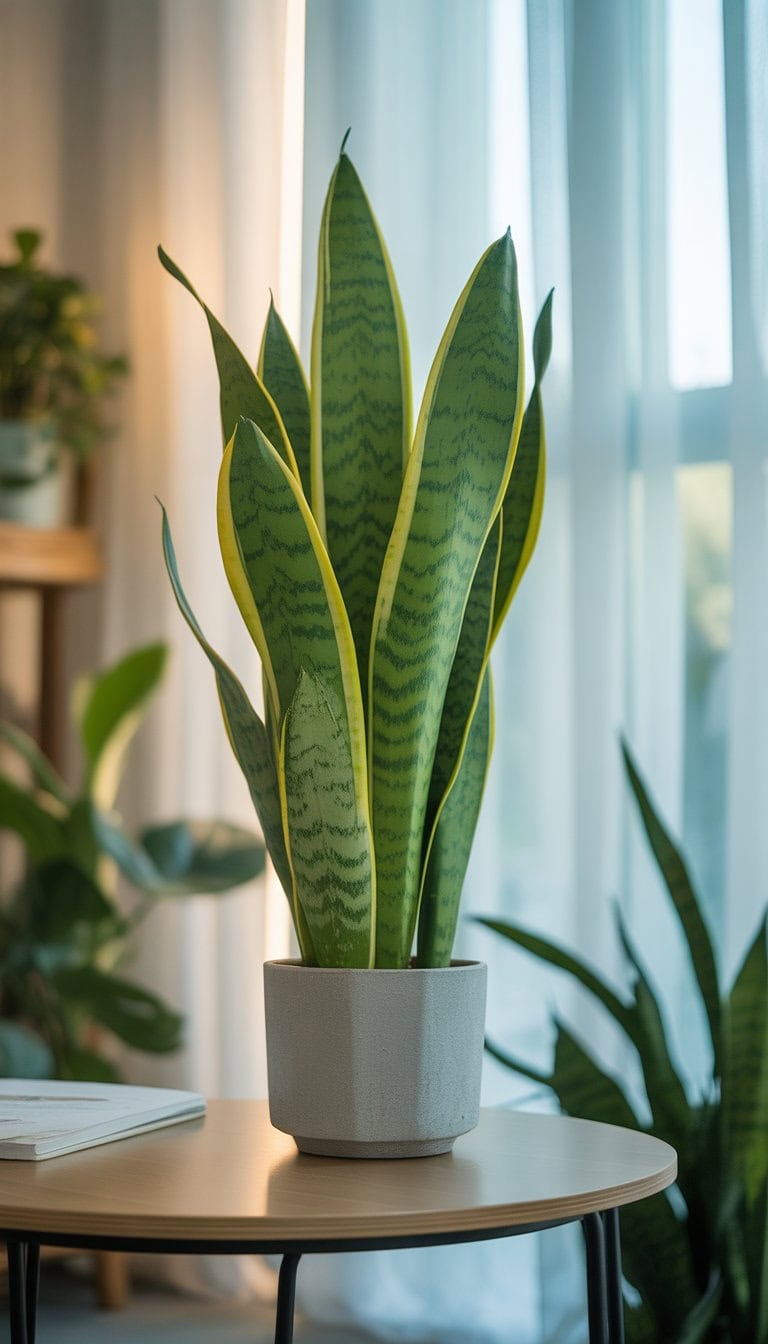
I love having a snake plant in my home. It looks strong and modern, and it’s one of the easiest plants to care for.
What really excites me is how it helps clean the air. The snake plant is known for filtering out indoor pollution and can even deal with stuff like formaldehyde and benzene.
Another thing I appreciate is that it releases oxygen at night. Most plants only do this during the day, but with a snake plant beside my bed, I sleep a little easier.
If you need a simple and powerful way to refresh your space, this plant fits perfectly. Snake plants don’t need much light or water, so I never stress about forgetting them. They truly bring a breath of fresh air to any room.
Golden Pothos for easy care and toxin absorption
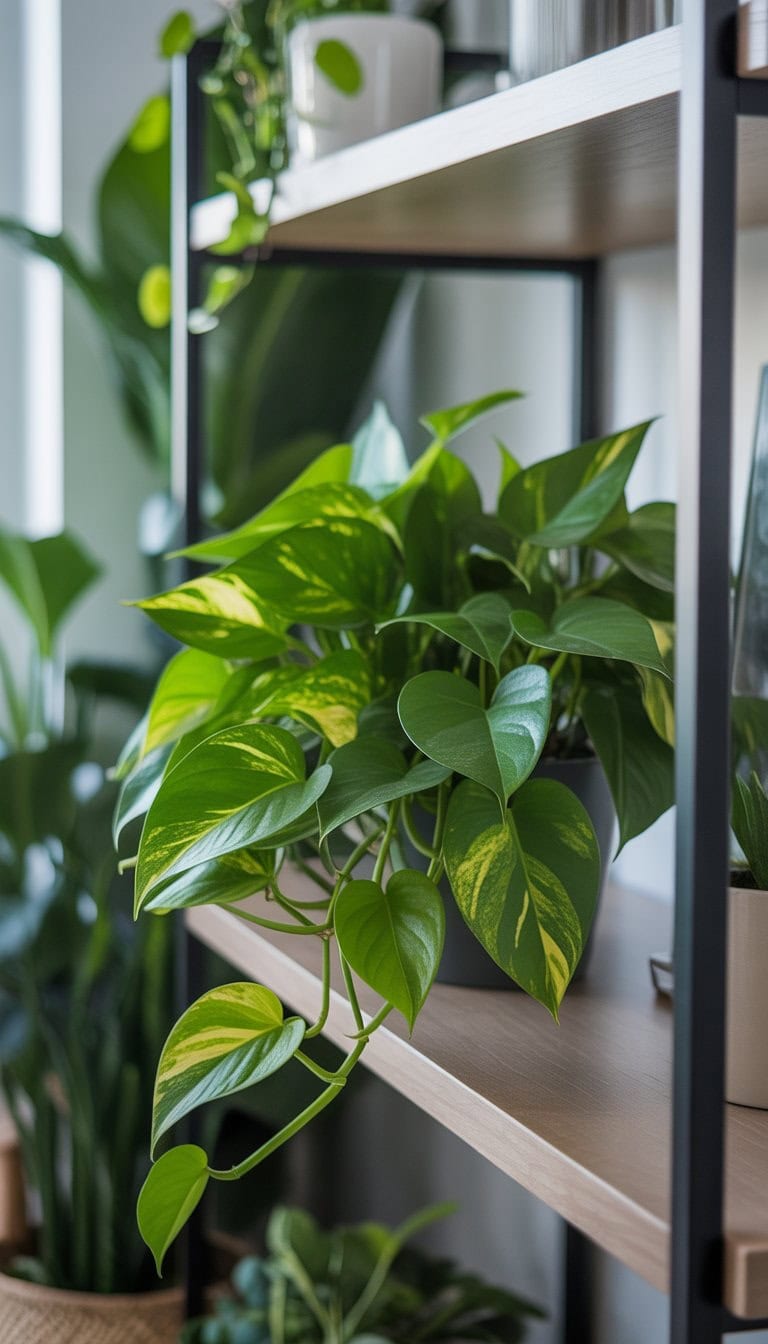
I’ve always loved how simple golden pothos is to care for. Even if I forget to water mine once in a while, it keeps growing and looks great. It does well in most corners of my home, even where light is low.
What really draws me in is its reputation for cleaning the air. Golden pothos can help filter out toxins like formaldehyde, toluene, and xylene, making my space feel fresher. I read that it’s one of the best plants for removing indoor toxins.
I do need to keep it out of reach of my pets, as golden pothos isn’t safe for cats or dogs. But for me, it’s been one of the most reliable and useful houseplants.
Philodendron to calm anxiety and promote relaxation
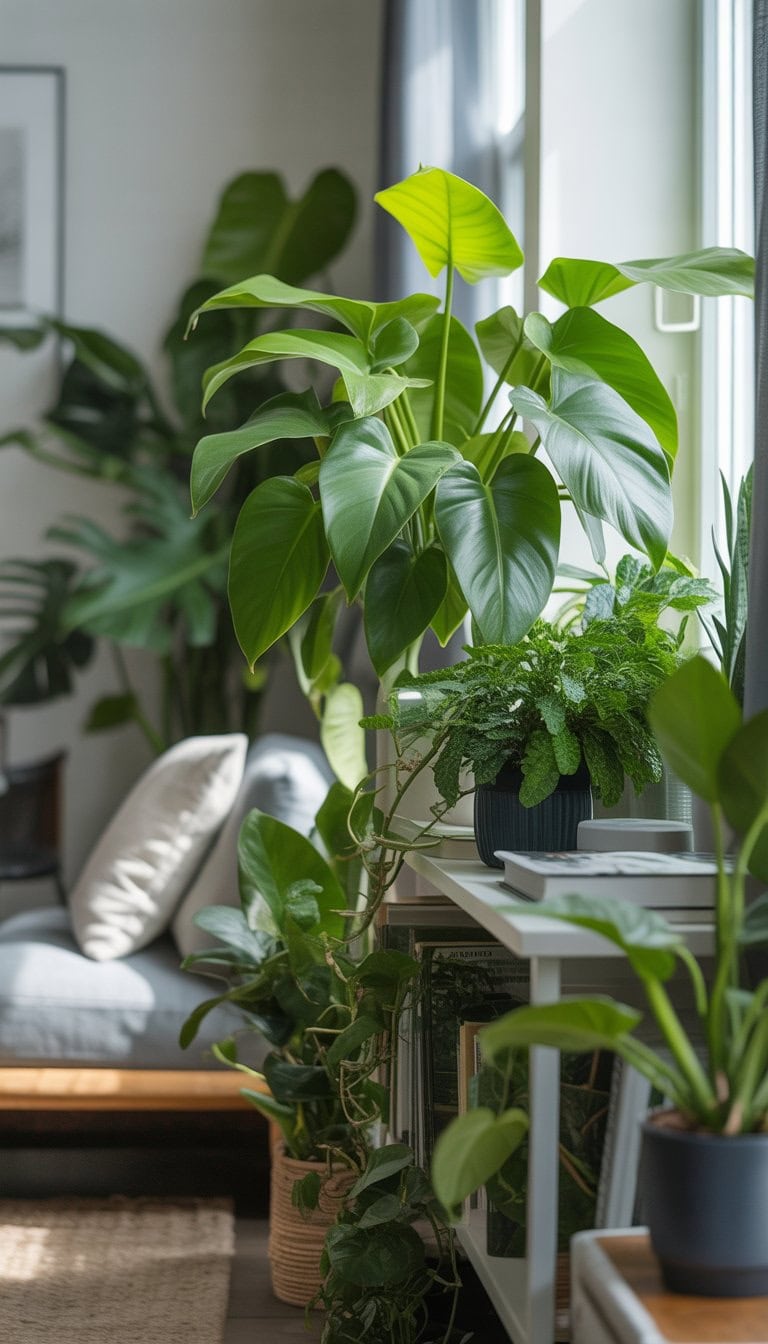
I love how philodendrons bring a gentle, calming vibe to my home. Their heart-shaped leaves always make me feel at ease, even on stressful days. When I catch a glimpse of their deep green color, I find it a bit easier to slow down and relax.
Philodendrons are known to help reduce stress and anxiety for many people. The act of caring for these plants helps me focus my mind and take a break from worrying thoughts. I’ve noticed their presence makes any room feel softer and more inviting.
Some studies even show that having indoor plants like philodendron can boost mood and recharge us during tough moments. If you want to learn more, read about how houseplants reduce stress.
Philodendrons have become one of my go-to choices for creating a peaceful space.
Bamboo Palm to reduce indoor airborne toxins
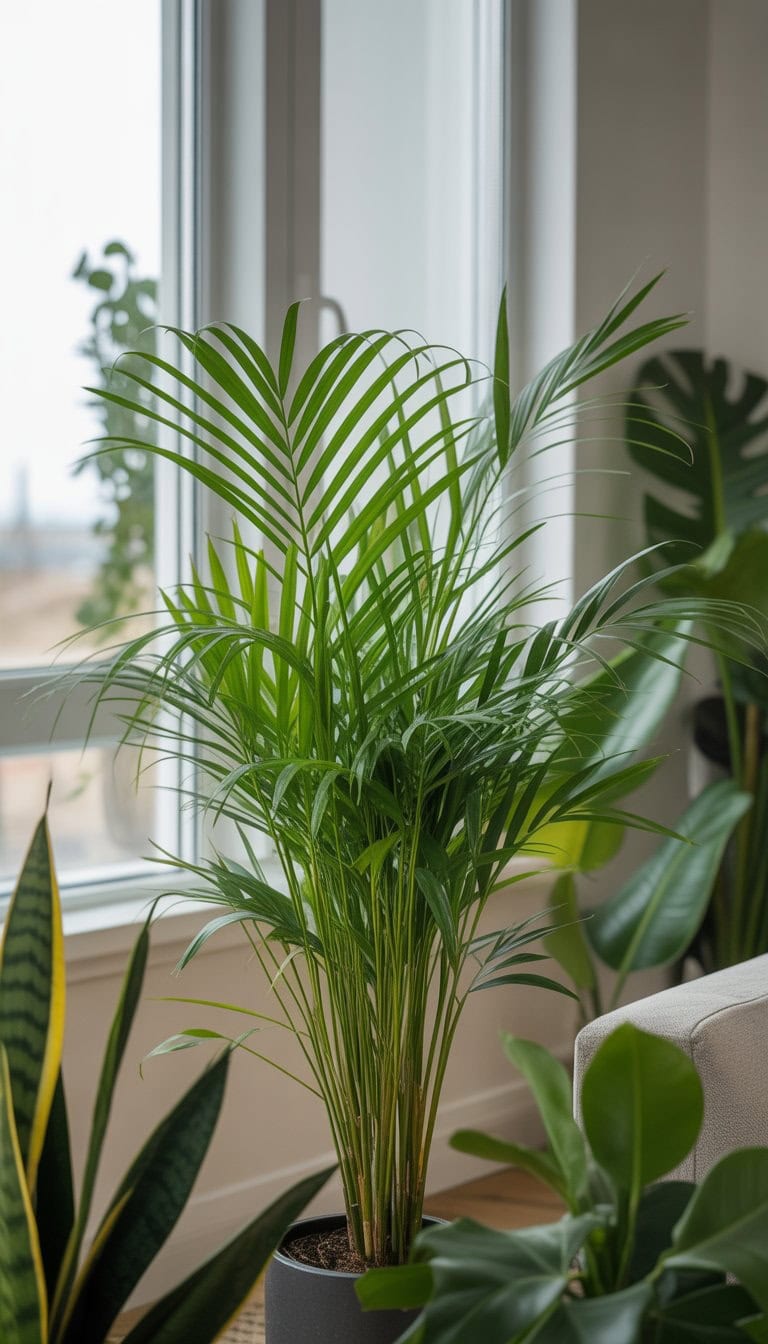
When I started looking for ways to clean my indoor air, the bamboo palm caught my eye. It’s not just a pretty plant; it’s also known for fighting common airborne toxins.
I noticed that my bamboo palm did best when I kept it in a spot with bright, indirect light. It thrives in humidity, so my bathroom and kitchen were great places for this plant.
I love how its tall, graceful leaves make the room feel calm and alive. I’ve read that bamboo palms can help reduce toxins in the air, and NASA even recommended it for better air quality. You can learn more about its purifying power at this helpful page on Architectural Digest.
For me, the bamboo palm isn’t just a decoration. It’s a natural way to create a fresher, healthier home.
Rubber Tree for oxygen production and aesthetic beauty
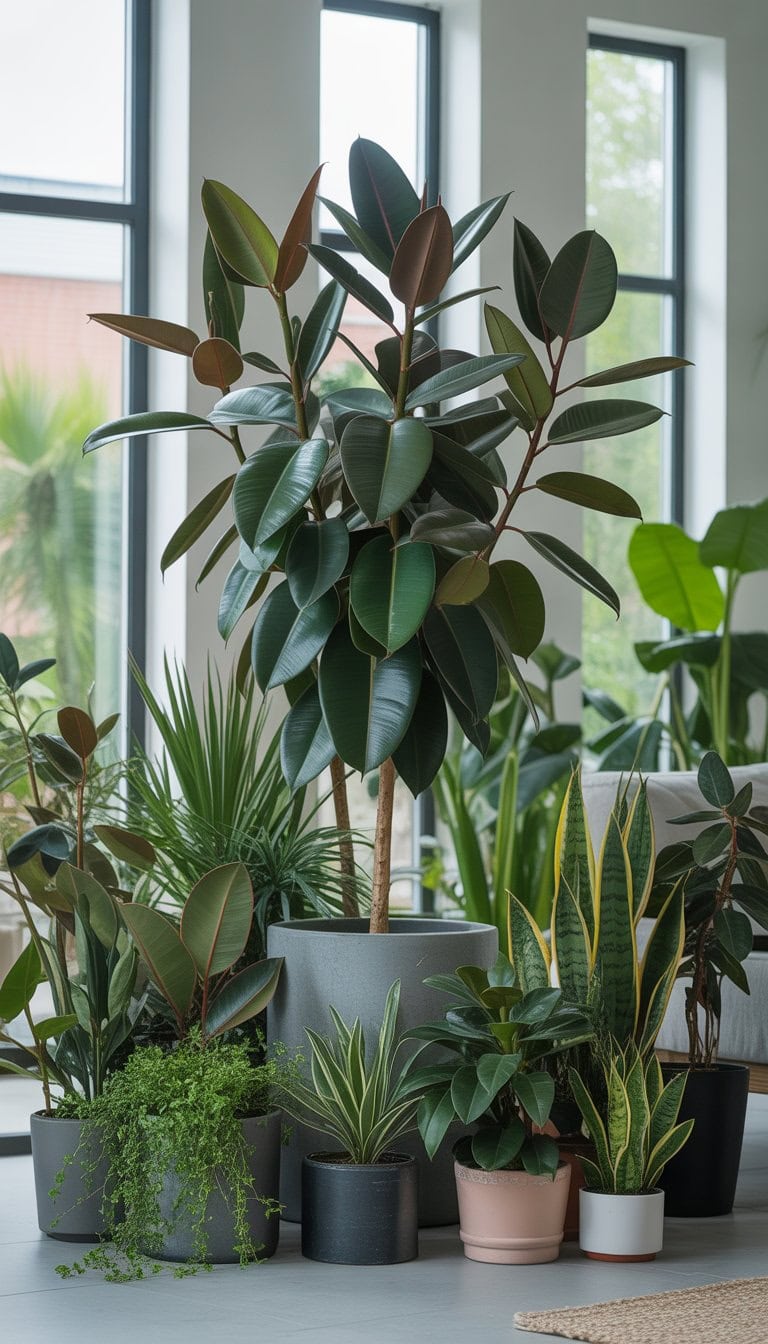
I love having a rubber tree in my space because it looks both bold and modern. The leaves are big, glossy, and deep green. This plant is a real showstopper in any corner of my home.
From what I’ve seen, rubber trees are more than just pretty. They help clean the air and can remove some common toxins. I enjoy knowing that while I relax, my rubber tree is working to freshen up the air around me.
Caring for my rubber tree is simple. It prefers medium to bright, indirect sunlight and doesn’t need much water. If you let the soil dry a bit between waterings, it stays happy.
If you want a plant that brings oxygen and style, the rubber tree is a great choice. It’s easy to see why it’s considered one of the best air-purifying plants for any home.
Ficus Tree to improve humidity and purify air
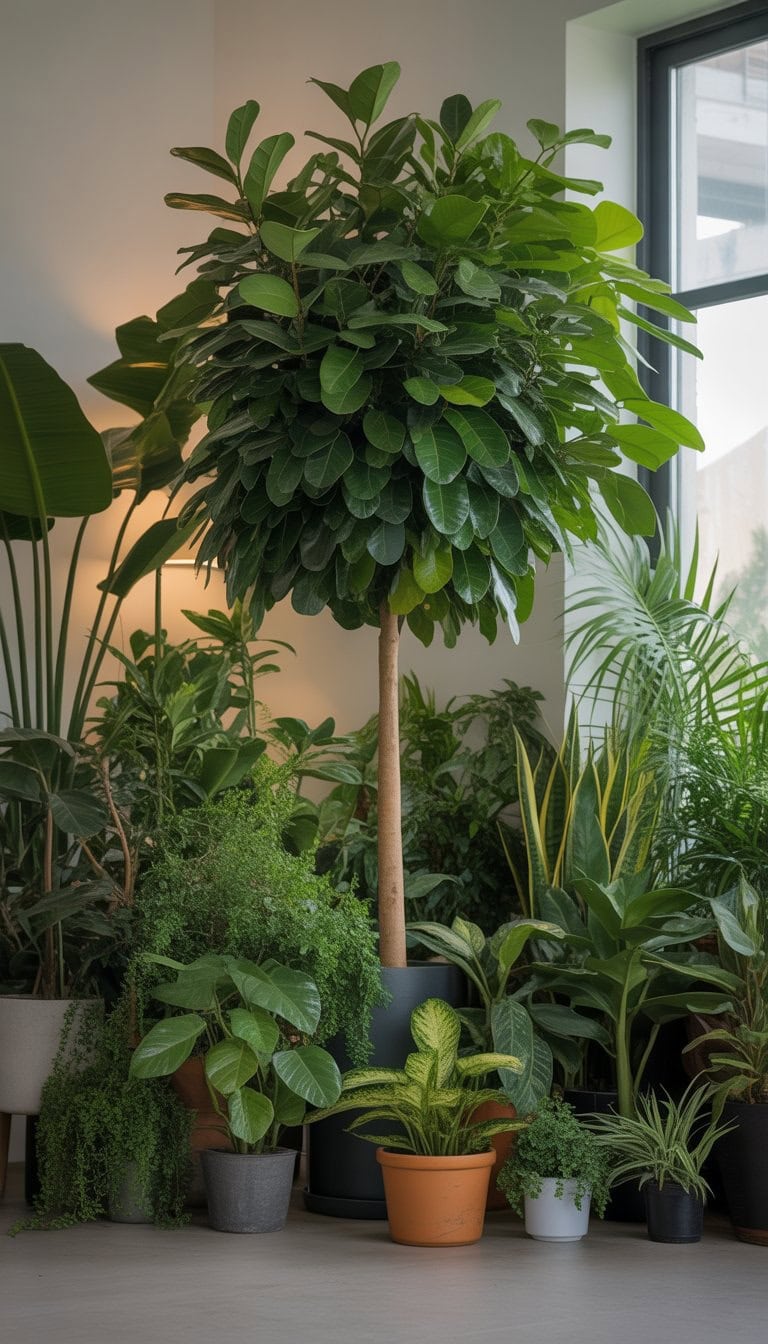
I love having a ficus tree in my home because it really helps balance the air. The leaves release moisture, which can add humidity to dry rooms, especially in winter.
Caring for my ficus is simple with the right tips. It likes bright, indirect sunlight and regular, but not overdone, watering. The ficus is surprisingly tough and can thrive indoors with little fuss.
One thing I notice is how fresh the room feels with a ficus nearby. These trees are known to remove some toxins from the air, which makes my space feel cleaner and more welcoming.
My ficus not only looks great, but it also lifts my mood. If you want to make your air healthier and your home brighter, the ficus is a wonderful choice. You can learn more about plant benefits for air quality.
Parlor Palm to soften indoor environments and reduce stress
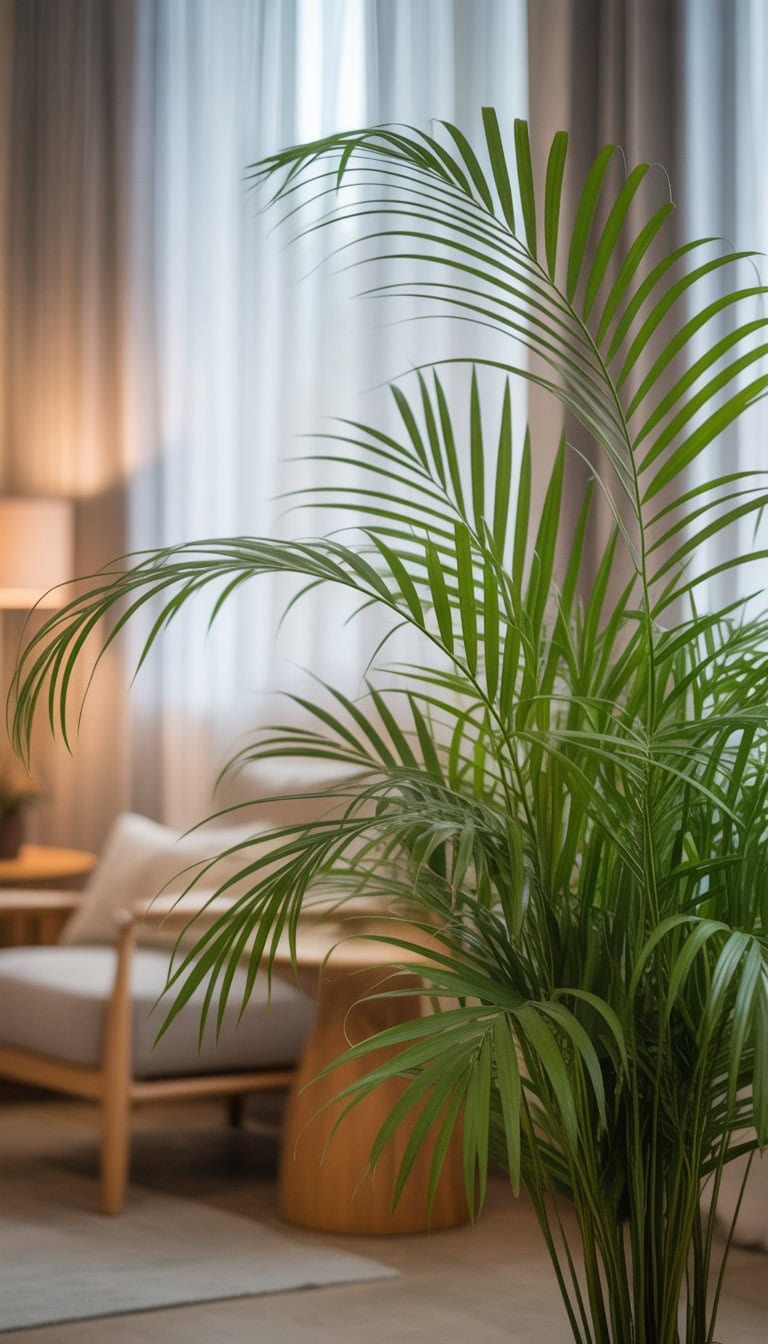
I love adding a Parlor Palm to my rooms because it creates a calm, inviting space with its soft green leaves. The gentle, arching fronds make any area feel more relaxed and comfortable. When I come home after a long day, seeing this plant helps me feel at ease.
Caring for a Parlor Palm is simple. I give it bright, indirect light and keep the soil lightly moist. The plant grows best when the air is not too cold, ideally between 65°F and 80°F.
I’ve noticed the Parlor Palm lifts my mood and makes my space feel alive. It is also pet-friendly and helps freshen the air, so I never worry about it being around my pets. If you want a low-maintenance plant that brings peace, the Parlor Palm is a great choice to try at home. For more tips, check out this Parlor Palm care guide.
Corn Plant for air purification and low maintenance
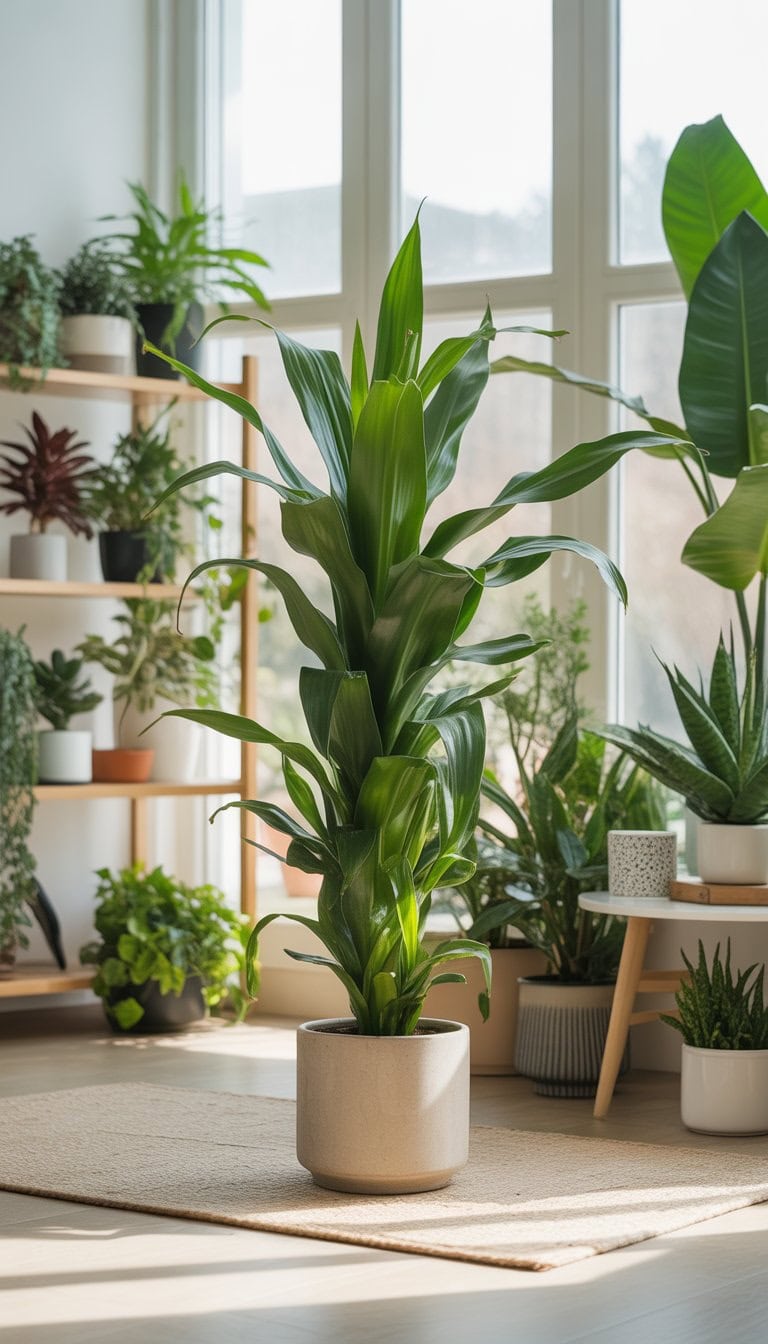
I’ve found the Corn Plant, or Dracaena, to be a solid choice for anyone new to houseplants. It has attractive green leaves with yellow bands that brighten up any corner. I don’t need to fuss over it much, which makes it perfect for my busy routine.
This plant helps filter and remove some indoor toxins like formaldehyde from the air. I appreciate that it releases oxygen while absorbing carbon dioxide, so my space feels fresher. According to experts, the Corn Plant is among the best options for air purification at home.
I give it a spot with indirect sunlight and water it once the soil feels dry. It keeps growing well without much effort from me. If you want an easy-care plant that improves air quality, the Corn Plant is one I always recommend. You can learn more about it from this Corn Plant guide.
ZZ Plant for durability and indoor air benefits
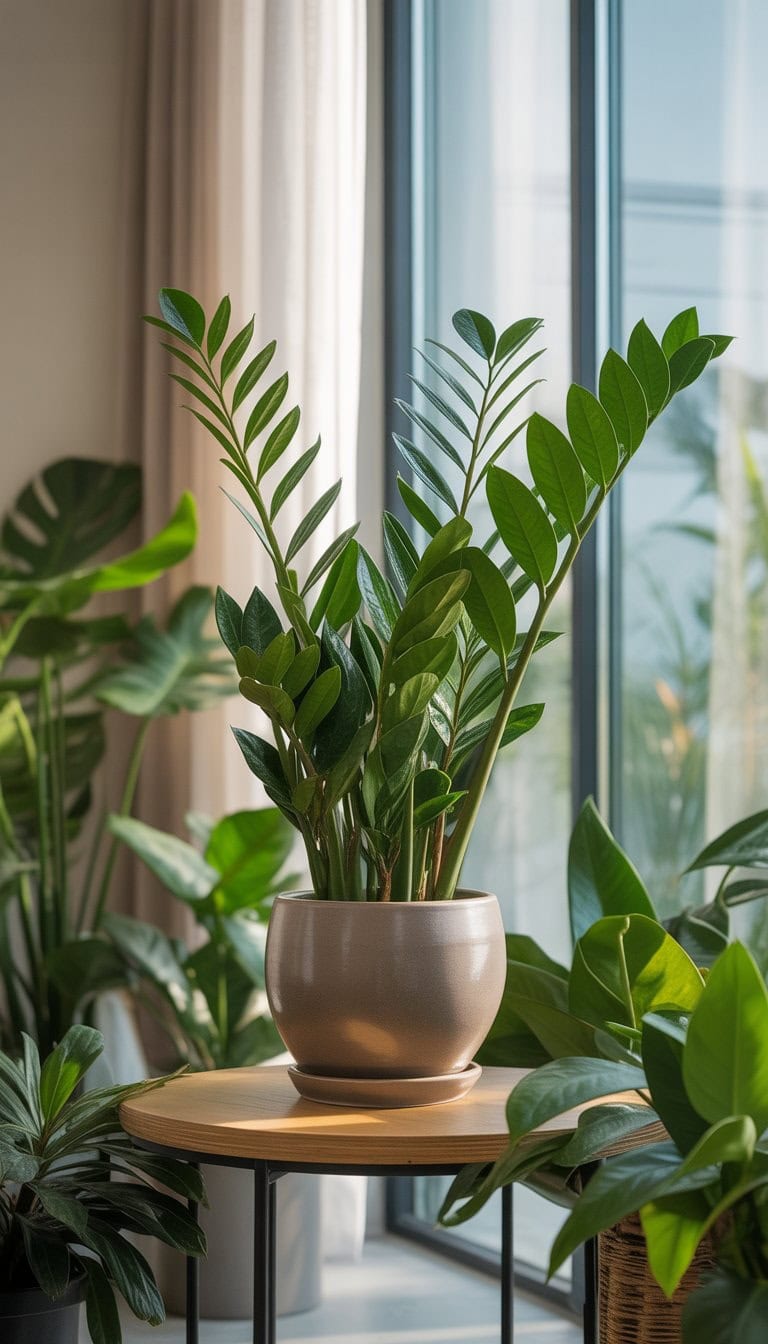
When I want a houseplant that can survive almost anything, I always think about the ZZ Plant. It has glossy, dark green leaves that add a classy touch to any room.
I love how little care it needs. The ZZ Plant thrives in low light and doesn’t need much water, which is perfect for my busy schedule. It doesn’t wilt quickly if I forget to water it for a while.
Another reason I keep a ZZ Plant is its reputation for helping clean the air. Studies show that ZZ Plants have air-purifying qualities, removing some toxins and making my home feel fresher.
If you’re looking for a plant that’s both tough and stylish, this one is an easy choice.
Areca Palm to humidify and freshen indoor air
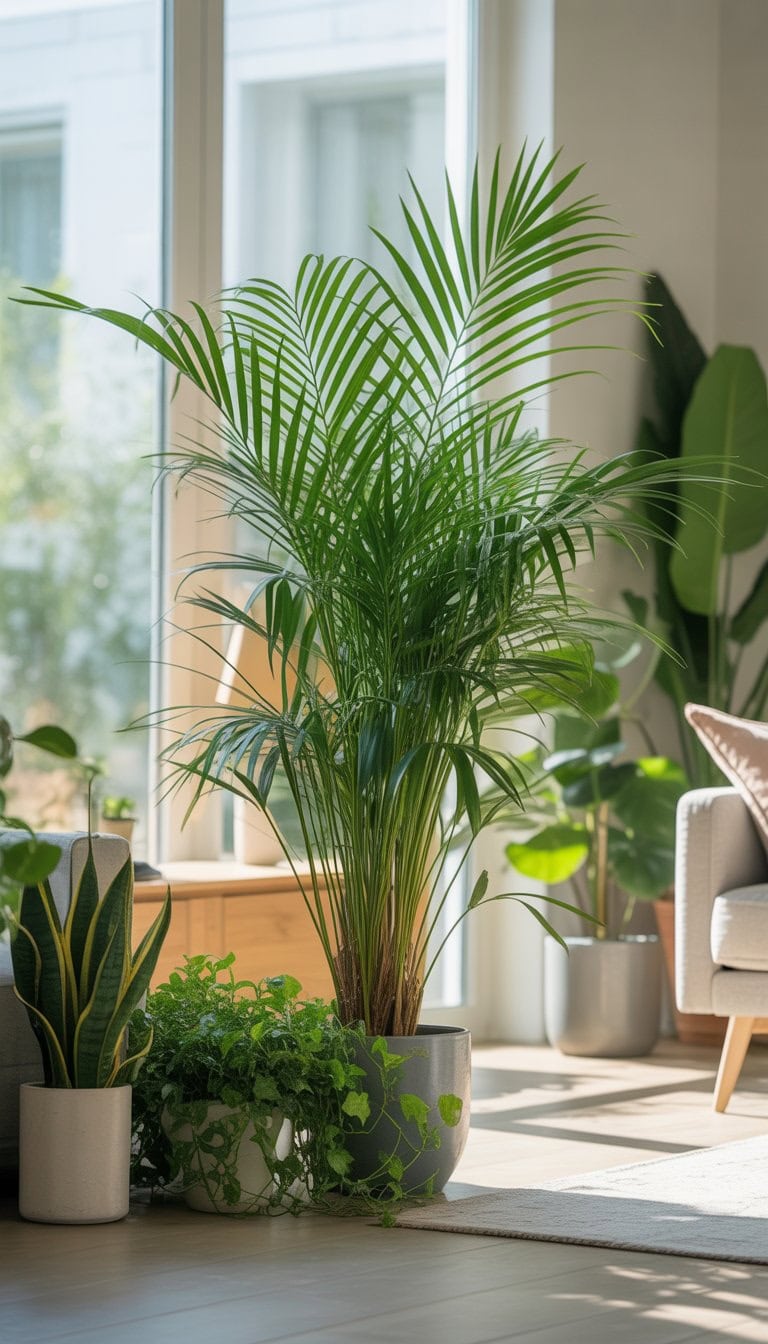
I love having an Areca Palm in my living room. It brings a touch of the tropics and makes my space feel more alive. The Areca Palm is known for its soft, green leaves and easygoing nature.
I’ve noticed that this plant does more than just look good. It acts as a natural humidifier, adding moisture to dry indoor air. This really helps when my home starts to feel stuffy or uncomfortable.
The Areca Palm is also praised for its air-purifying abilities. It filters out certain toxins and makes the air feel fresher and cleaner. I find it especially helpful during allergy season since I want my home to be a healthier place.
When I mist its leaves or place it near a humidifier, the plant thrives and looks its best. That little bit of care makes a big difference. I enjoy how simple it is to maintain while boosting the energy in my space. If you need fresh air and a calm mood, the Areca Palm is a wonderful choice.
Chinese Evergreen to reduce air pollutants

When I discovered the Chinese Evergreen, I was amazed by how easy it is to care for. Its broad, green leaves make any room look more peaceful and fresh.
One of my favorite things about this plant is its ability to help filter out unhealthy chemicals in the air. It doesn’t just sit pretty; the Chinese Evergreen actively works to absorb toxins, improving the air inside my home.
I’ve found that these plants do well in almost any kind of light, so I can put them in different rooms without worrying. Even when I forget to water it sometimes, it bounces back and keeps growing.
For anyone looking to boost their air quality while keeping things low maintenance, the Chinese Evergreen stands out. It’s one of those air-purifying plants that’s both helpful and beautiful.
Dracaena for toxin removal and clean air

When I added a Dracaena to my living room, I instantly noticed the space felt fresher. Dracaena is known for its ability to clean indoor air by removing toxins like benzene and formaldehyde.
What I appreciate most is how easy it is to care for. I only need to water mine every week or so, and it does well in medium light.
Research and several experts recommend the Dracaena for air purification. It’s also said to help boost attention span, which I find useful in my home office.
My Dracaena stands tall and brightens up any corner. It’s more than just a plant—it’s a daily boost for my mood and my air quality.
Boston Fern for high humidity and toxin absorption
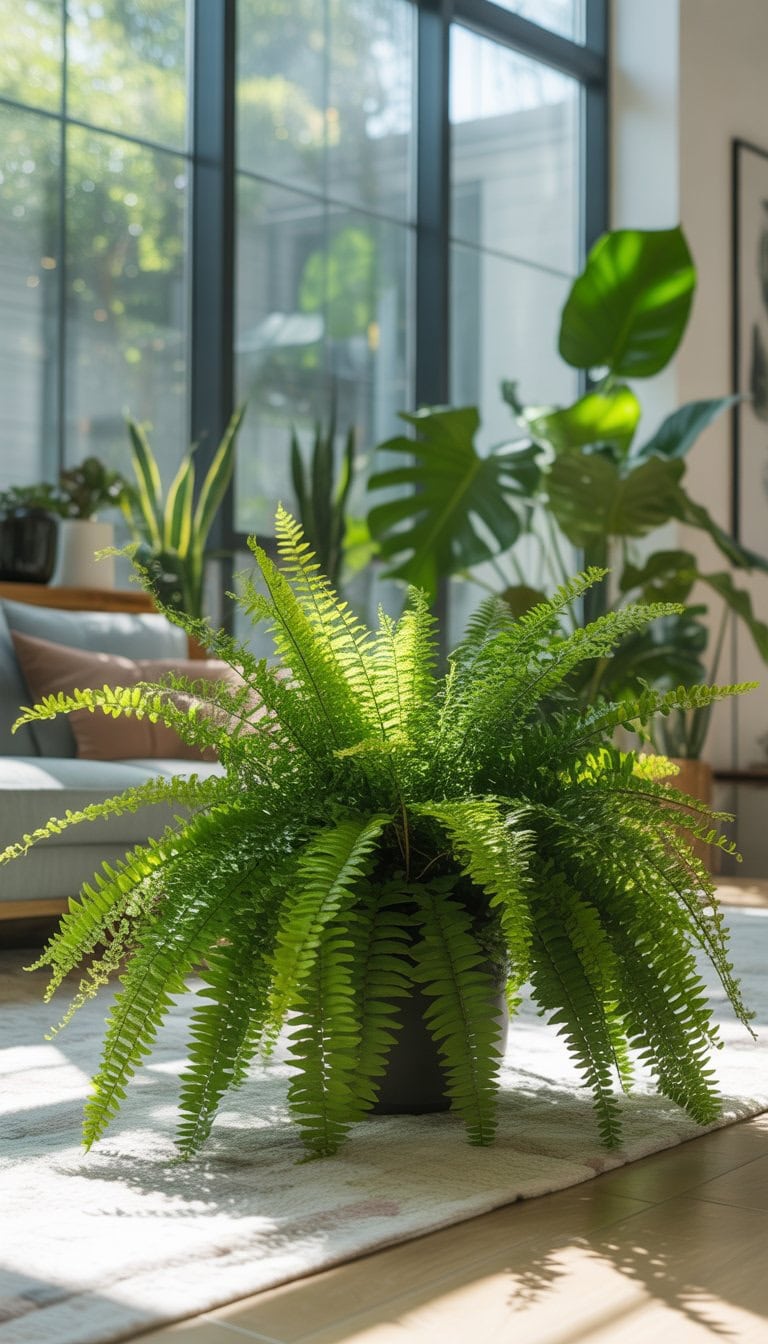
When I added a Boston fern to my space, I noticed my room felt fresher and looked much livelier. These ferns thrive in humid spots, so I like to keep mine in the bathroom or near the kitchen for an extra boost.
The lush, feathery fronds make any corner feel cozy and green. I’ve also read Boston ferns are helpful for cleaning the air by absorbing toxins, which is a win in my book. Plants like this can even help with humidity and reduce condensation inside the home.
Taking care of my Boston fern is simple. I just keep the soil damp and make sure it gets indirect sunlight. Having this classic houseplant around has brought a calm, refreshing feel to my routine.
Calathea to brighten up space and improve air quality
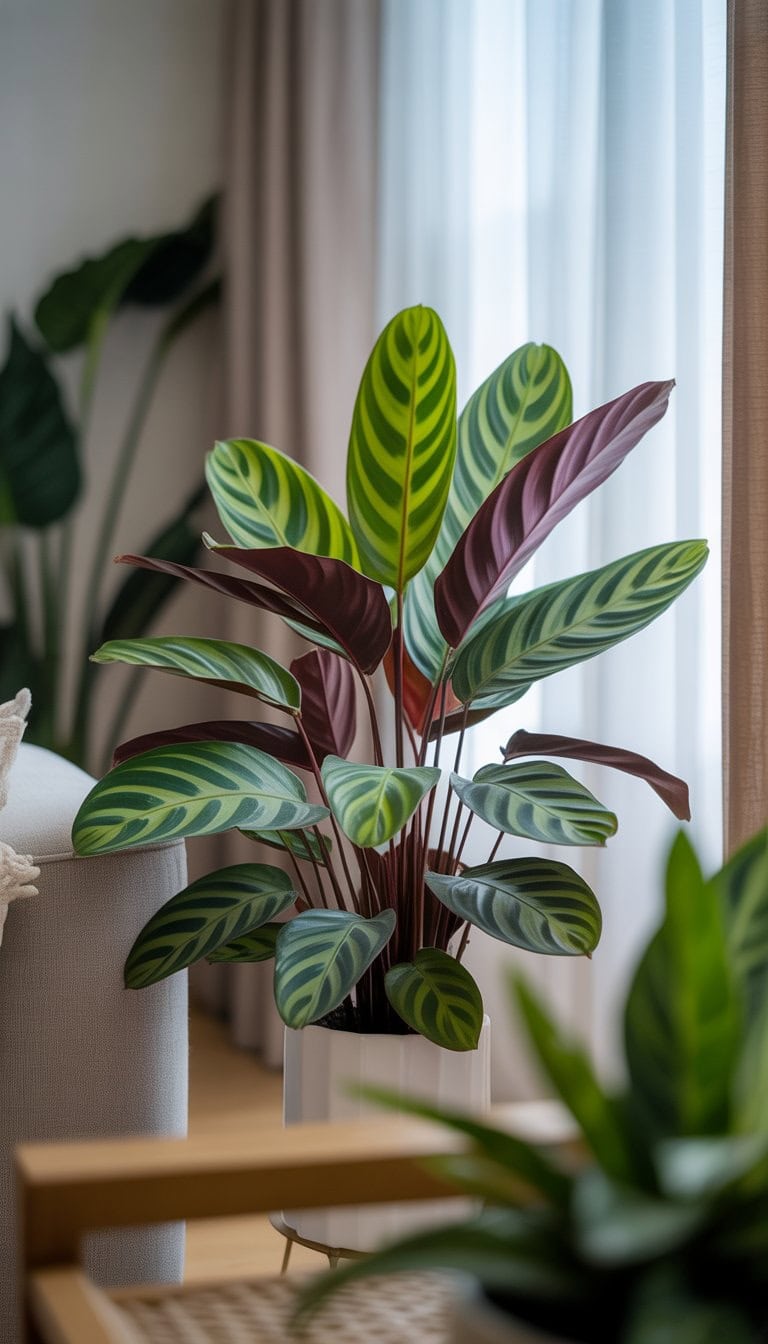
I love how a Calathea instantly lifts the mood in any room. Its bold leaf patterns catch the light and make my space feel lively, even on cloudy days. The shades of green and purple give my shelves a fresh look.
When I first brought a Calathea home, I was amazed by how easy it was to care for. I just keep the soil a bit moist and avoid direct sunlight. The plant rewards me with healthy, beautiful leaves all year.
What makes Calathea stand out is its ability to help clean the air. It filters certain toxins and gives me a small boost of fresh oxygen indoors. I’ve read that Calathea is one of the popular air-purifying houseplants, and it feels good knowing my home is a little healthier.
Lavender Plant to reduce anxiety and promote sleep
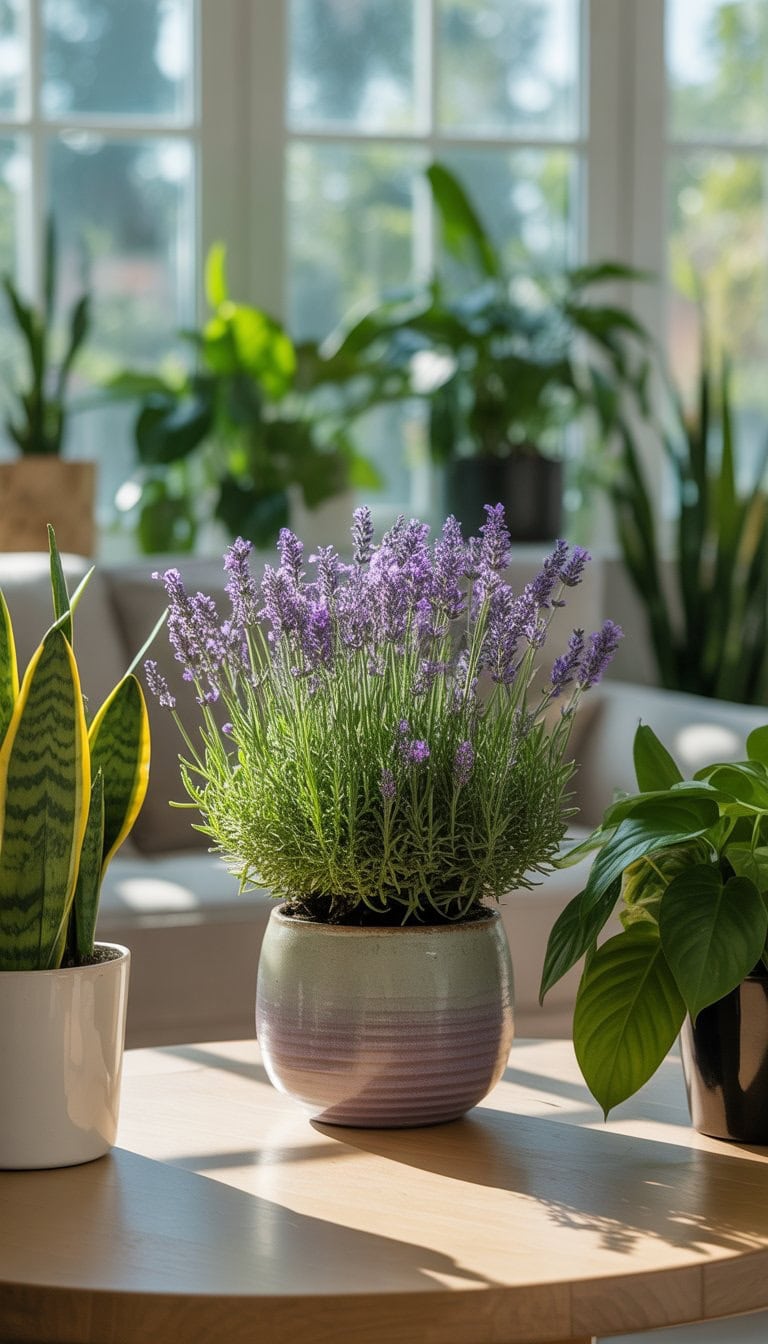
I always find the scent of a lavender plant calming after a long day. Whenever I walk into a room with blooming lavender, the gentle aroma helps me relax almost right away. It’s not just in my imagination—lavender is well known for its ability to support the nervous system and bring a peaceful feeling.
I keep my lavender plant in my bedroom, where it helps make the space feel more restful. I notice that I fall asleep a bit easier when its soothing fragrance is in the air.
Having a lavender plant in my home reminds me to slow down and breathe. It’s especially nice knowing that this plant is often chosen for its properties to help reduce anxiety and promote restful sleep. Its simple beauty fits in anywhere and brightens my mood.
Jasmine for uplifting mood and increasing relaxation

I love having a jasmine plant at home because its sweet scent always helps me feel calmer. The flowers are small and star-shaped, and I find their fragrance relaxing after a long day.
When I place jasmine in my bedroom, I notice I sleep better and feel more at ease. Studies suggest jasmine may help people fall asleep faster and stay asleep longer. The scent seems to ease my stress and help quiet my mind at night.
Jasmine is easy to care for if it gets enough sunlight. I keep mine near a sunny window, where it thrives and fills my space with freshness. With its beautiful blooms, jasmine lifts my mood and turns any room into a peaceful spot. For anyone looking to create a calming space, these plants are a wonderful choice for both fragrance and atmosphere. Learn more about jasmine’s relaxing effects at Good Housekeeping.
Mint Plant to energize the mind and refresh air
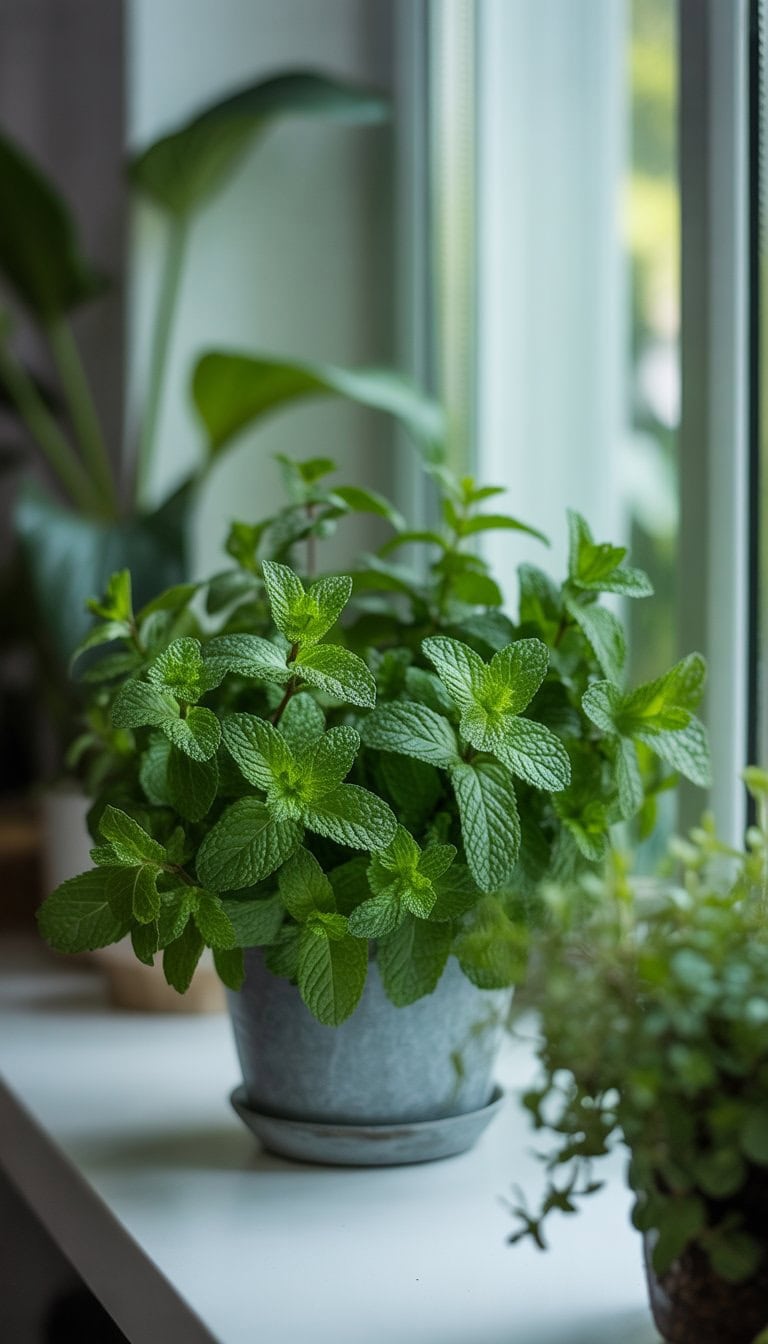
I love having a mint plant nearby because it wakes up my senses and makes my space feel bright. When I gently rub the leaves, I get a fresh, clean smell that instantly lifts my mood. Mint feels like a natural boost for my mind, especially on days when I need more energy.
Keeping mint indoors helps clear out stuffy air. I’ve noticed it makes my rooms feel fresher and more pleasant. Mint is also easy to grow on a sunny windowsill, which is perfect for my busy routine.
I use the leaves in tea and sometimes in food, so it’s practical as well as uplifting. If you’re looking for an easy way to support wellbeing, this plant is a good pick. Mint is even known for its calming scent, making it a popular plant for both energy and relaxation. You can read more about the benefits of growing mint at home.
The Science Behind Indoor Plants and Wellbeing
When I bring plants indoors, I notice real changes in how I feel and even how the air seems to smell and feel. Science backs up a lot of what I experience—especially when it comes to mental health and the air I breathe.
Boosting Mood and Reducing Stress
I’ve seen studies that show plants do a lot for my mind, not just my space. Having indoor plants nearby has been shown to lower levels of cortisol, which is a hormone linked to stress.
When I spend time watering, trimming, or just looking at my plants, my mood usually lifts. This isn’t just in my head; science confirms that indoor plants boost psychological well-being and can help sharpen my focus and attention span. In hospitals and offices, people surrounded by greenery feel calmer and less anxious.
Some research says the benefits can include a sense of accomplishment when I watch something grow. One systematic review found that people who keep plants report feeling more relaxed, and even simple activities like arranging leaves or repotting can provide quick relief from tension.
A quick list of psychological perks:
- Reduced stress levels
- Better mood and focus
- Increased happiness and satisfaction
Improving Air Quality
People often ask me if plants really clean the air. Some studies suggest houseplants can help, but it’s not always like having an air purifier. Plants do absorb some pollutants, such as formaldehyde and benzene, through their leaves and roots.
When I keep plants in my home, they help balance the humidity. This is important, especially in winter when the air gets so dry. As plants take in carbon dioxide and release oxygen, I notice the air feels fresher, especially in small rooms.
While the effect on air quality is real, it’s small if there are only a few plants. Filling my space with lots of different species makes a bigger difference. According to research, green leafy plants like peace lilies and snake plants are especially good at filtering airborne toxins.
Table: Air Quality Benefits by Common Houseplants
| Plant Name | Air Quality Benefit |
|---|---|
| Snake Plant | Removes formaldehyde |
| Peace Lily | Absorbs mold spores |
| Spider Plant | Filters xylene and toluene |
| Aloe Vera | Removes benzene |
I choose a variety of these to make my home feel fresher and healthier.
Tips for Creating a Life-Changing Indoor Oasis
It took me years to figure out that happy plants need the right spots and a little daily care. Finding their ideal place and learning basic routines have made all the difference in my space.
Choosing the Perfect Spot for Each Plant
I always start by looking at how much sunlight each room in my home gets. Some rooms are bright all day, while others only see a little sun. I use that to match each plant to its perfect home. For example, snake plants and pothos love low light, while a fiddle leaf fig needs a sunny window.
Table: Light Needs for Common Indoor Plants
| Plant | Light Level | Best Room Location |
|---|---|---|
| Snake Plant | Low/Medium | Bedroom, Hallway |
| Peace Lily | Low/Medium | Bathroom, Living Room |
| Fiddle Leaf Fig | Bright, indirect | Near south/west-facing window |
| Spider Plant | Medium/Bright | Kitchen, Office |
I also pay attention to air flow and temperature. Plants don’t like drafts or sitting near heaters. Grouping plants with similar needs makes watering and care much easier. If I’m unsure, I’ll read about my plant’s light requirements or check tips from plant lovers who highlight the importance of matching sunlight to plant needs.
Essential Care Routines for New Plant Parents
Watering schedules can be tricky at first, so I always check the soil before giving my plants a drink. Overwatering is a common mistake—I wait until the top inch is dry unless the plant prefers moisture, like ferns or peace lilies.
Here’s my simple routine to keep things stress-free:
- Check soil moisture once a week.
- Wipe leaves with a damp cloth every two weeks.
- Rotate plants for even growth every month.
- Use a balanced fertilizer every few weeks during the growing season.
I pick certain days for plant care to build a habit. I also keep notes on what each plant likes. For anyone just starting, learning these basic routines can help your plants thrive and create a calming atmosphere. Adding a few plants really can help boost your mood and reduce stress.
Frequently Asked Questions
Having indoor plants isn’t just about looks. I love how the right houseplants can refresh my air, boost my mood, and inspire creativity all around my home.
Which indoor plants are the best for purifying my living space?
I’ve found that Snake Plant and Spider Plant are two of the champions when it comes to cleaning my indoor air. Snake Plant, in particular, is great for removing toxins like formaldehyde and even releases oxygen at night. English Ivy is also popular for cutting down airborne mold and some toxins.
What are some low-maintenance houseplants that contribute positively to air quality?
If I’m looking for easy-to-care-for options, Spider Plant and Snake Plant make my life simple. Both need little attention and can thrive in different lighting conditions. Aloe Vera also falls into this category, as it needs little water and adds to air purity over time.
Can you recommend any home plants particularly effective in absorbing harmful toxins from the environment?
I like using English Ivy because it’s well known for its ability to absorb benzene and other toxins. Peace Lily is another favorite of mine, as it can help clear out ammonia, benzene, and formaldehyde from the air. I also keep Snake Plant in my bedroom since it’s effective for this purpose.
How do specific plants promote mental health and overall wellbeing indoors?
For me, Peace Lily stands out by making the room feel more peaceful and calm and sometimes even lowering stress levels. Just taking care of my plants and seeing their growth gives me a sense of accomplishment. Adding green plants around my home helps me focus better and feel more relaxed.
Could you list a few houseplants that are known for their unique healing properties?
Aloe Vera is my go-to for burns and small skin irritations. I keep a pot near my kitchen window and use the gel straight from the plant. Lavender can also help improve sleep when placed nearby, while the aroma of Rosemary lifts my spirits on tough days.
What are some indoor plants that also have the added benefit of being visually inspirational?
I’m always amazed by the Peace Lily’s elegant white blooms and glossy leaves. Spider Plant’s striped foliage and hanging shoots brighten up any dull corner. English Ivy’s trailing vines can turn a simple shelf into something special, and Snake Plant’s tall, upright leaves create a bold look that lifts my spirits. If I want something different, Calathea’s patterned leaves feel like artwork to me.
For more air-purifying options, visit this detailed guide on air-purifying houseplants.
